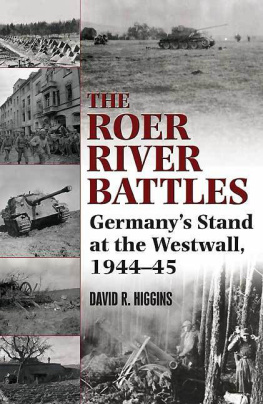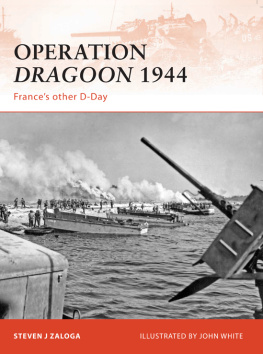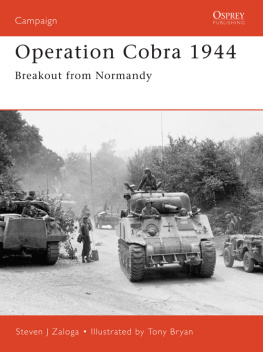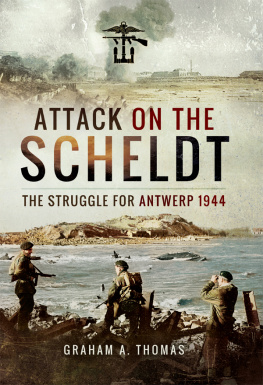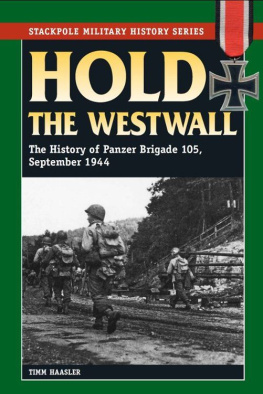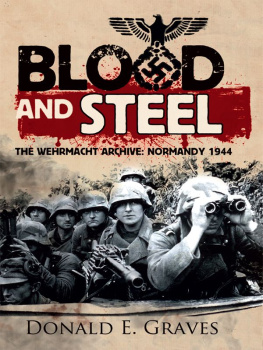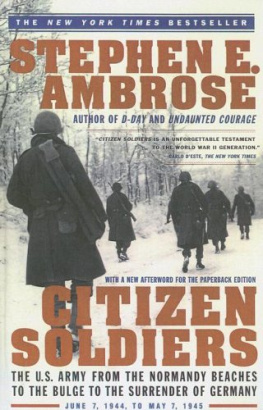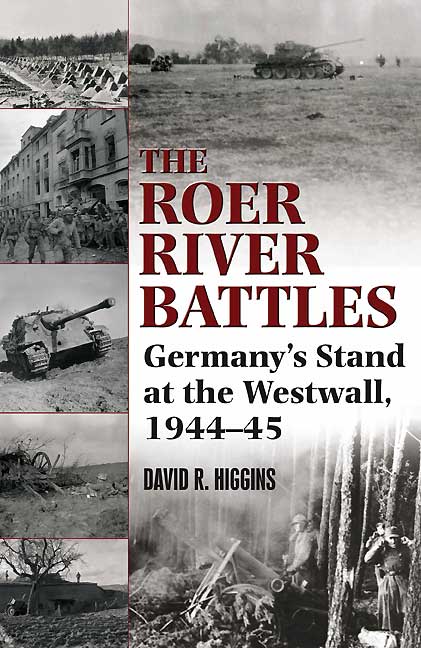David R. Higgins - Roer River Battles: Germanys Stand at the Westwall, 1944–45
Here you can read online David R. Higgins - Roer River Battles: Germanys Stand at the Westwall, 1944–45 full text of the book (entire story) in english for free. Download pdf and epub, get meaning, cover and reviews about this ebook. year: 2010, publisher: Casemate Publishers (Ignition), genre: History. Description of the work, (preface) as well as reviews are available. Best literature library LitArk.com created for fans of good reading and offers a wide selection of genres:
Romance novel
Science fiction
Adventure
Detective
Science
History
Home and family
Prose
Art
Politics
Computer
Non-fiction
Religion
Business
Children
Humor
Choose a favorite category and find really read worthwhile books. Enjoy immersion in the world of imagination, feel the emotions of the characters or learn something new for yourself, make an fascinating discovery.

- Book:Roer River Battles: Germanys Stand at the Westwall, 1944–45
- Author:
- Publisher:Casemate Publishers (Ignition)
- Genre:
- Year:2010
- Rating:3 / 5
- Favourites:Add to favourites
- Your mark:
Roer River Battles: Germanys Stand at the Westwall, 1944–45: summary, description and annotation
We offer to read an annotation, description, summary or preface (depends on what the author of the book "Roer River Battles: Germanys Stand at the Westwall, 1944–45" wrote himself). If you haven't found the necessary information about the book — write in the comments, we will try to find it.
A selection of the Military Book Club.
Following the Allied breakout from the Normandy beachhead in July 1944, the vaunted German Army seemed on the verge of collapse. As British and US forces fanned out across northwestern France, enemy resistance unexpectedly dissolved into a headlong retreat to the German and Belgian borders. In early September, an elated Allied High Command had every expectation of continuing their momentum to cripple the enemys warmaking capability by capturing the Ruhr industrial complex and plunging into the heart of Germany. After a brief pause to allow for resupply, Courtney Hodges First Army prepared to punch through the ominous but largely outdated Westwall, the Siegfried Line, surrounding Aachen.
But during the lull, German commanders such as the lion of defense, Walter Model, reorganized depleted units and mounted an increasingly potent defense. Though the German Replacement Army funneled considerable numbers to the front, they too often strained an overburdened supply system and didnt greatly enhance existing combat formations. More importantly, the panzer divisions, once thought irretrievably destroyed, were resupplied and reinvigorated. When the Allied offensive resumed, it ran into a veritable brick wallgains measured in yards, not miles, if any were made at all.
While both sides suffered equally in an urbanized environment of pillbox-infested hills, impenetrable forests, and freezing rain, the Germans were on the defensive and better able to inflict casualties out of proportion to their own. For the US First Army, what was originally to be a walk-through turned into a frustrating six-month campaign that decimated infantry and tank forces alike. The broad front, as opposed to a Schwerpunkt strategy, led to the demise of many a citizen-soldier.
Drawing on primary Wehrmacht and US sources, including battle analysis and daily situation and after-action reports, The Roer River Battles provides insight into the desperate German efforts to keep a conquering enemy at the borders of their homeland. Tactical maps down to battalion-level help clarify the very fluid nature of the combat. Combined, they serve to explain not just how, but why decisions were made and events unfolded, and how reality often differed from doctrine in one of the longest US campaigns of World War II.
David R. Higgins: author's other books
Who wrote Roer River Battles: Germanys Stand at the Westwall, 1944–45? Find out the surname, the name of the author of the book and a list of all author's works by series.

